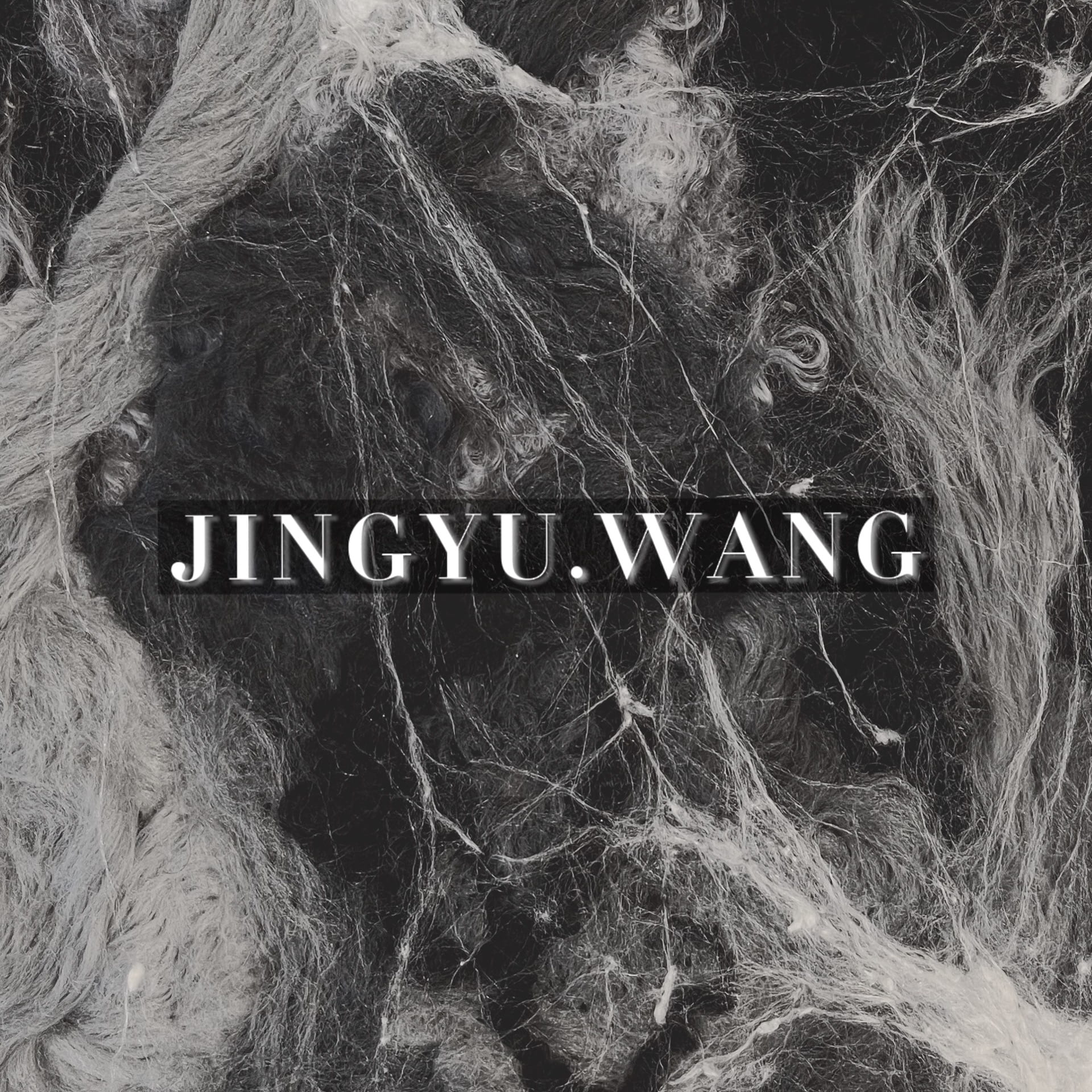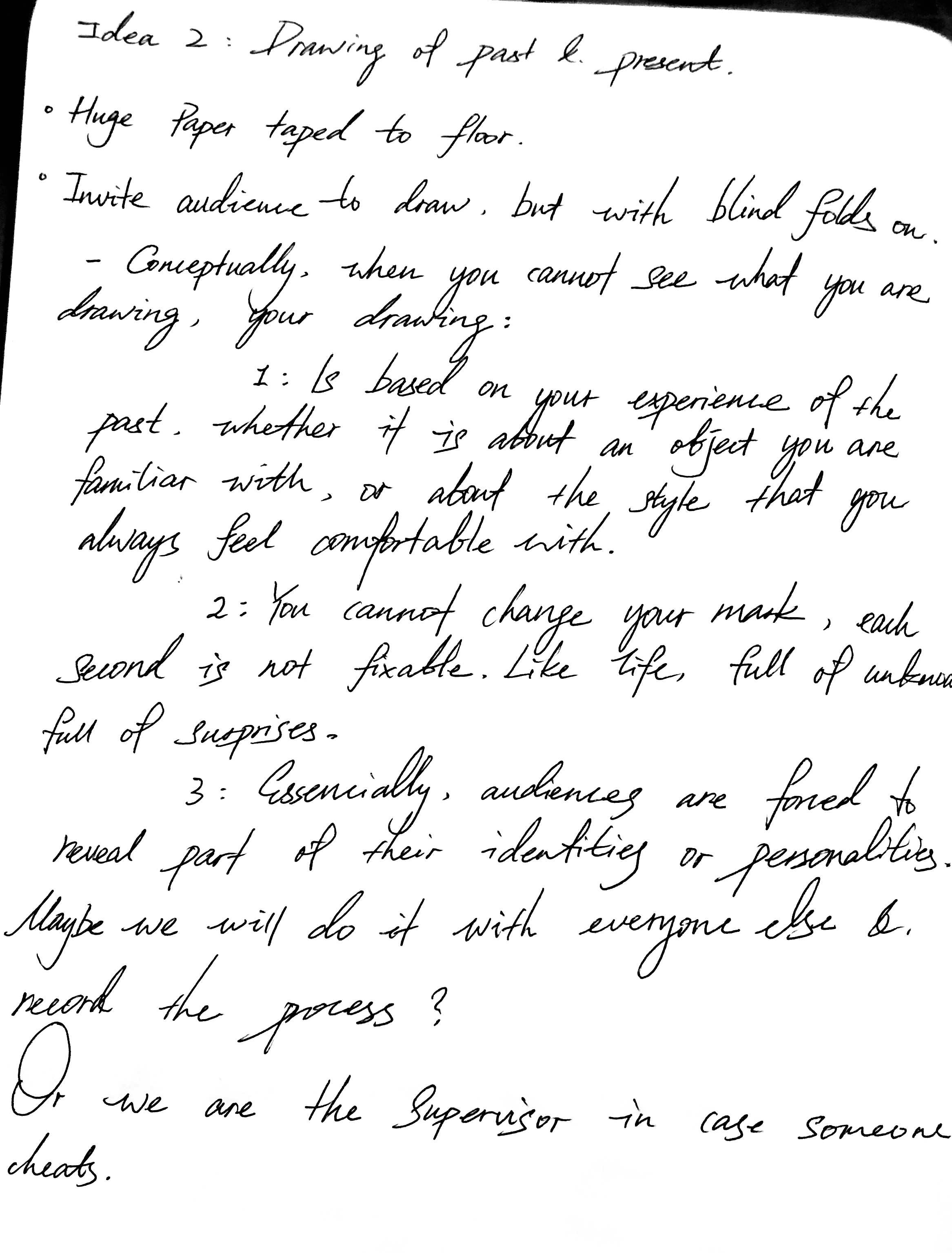What is the concept behind visual art? Well, it involves visual experience from both artists and viewers; as the extent of the artwork remain in the realm of observation, it is so called visual art.
So what is the concept behind performance art? If the viewers are mainly observing the work, there would be no reason for it to be a true performance. It should be called a mix – visual art for viewers but performance art for artists.
To me, the true performance arts require both audience and artists to participate in the performance. Therefore, for this project, I invited audience to join me in the experience of unconsciousness, specifically exploring the unconsciousness of time and space.
The way to engage my audiences was through blind-drawing. I obtained two long scrolls of paper from the plotter and taped them to the floor. So my audiences could sit on the ground without having to worry about tumbling if they were standing. In addition to the blind-folds we gave out to every person, the lights were also switched off to ensure the impossibility of viewing. There were several reasons behind this practice that led to my decision of choosing blind drawing as my medium of performance:
- If ones cannot draw from an observable reference, the drawing would be something from memory or in a style or way that is most familiar to the individual. Whether it is based on intuition or an instinct, the action should have a reason from a past experience. As human tend to stay in their safe zone when they cannot see in the darkness. This would be the concept of past.
- Any marks made on the paper right at that moment is unchangeable – nothing can be reversed and fixed, a mistake remains a mistake in blind drawing, as people cannot see where their previous mark is precisely. This would be the concept of present.
- Drawings stay unseen/unknown until the end of the performance when the lights go on. What unfolds in front of audiences are their past marks, the time that is lost in the darkness, but also a reflection of their personalities. This would be the concept of future.
- The deprivation of sight creates a sense of privacy and emphasizes the ability to hear, which is expected to get audiences more engaged with the drawing itself, paying attention only to the physicality of the body movement and the sound made by the markers, thus losing sense of time but also resemble the process of meditation (focus on present). This would be the concept of speed of time on a cognitive level.
The role me and my partner took was the creator of such environment. We chose a poem about concept of time in past, present, future that had a close connection to the activity, and read it repeatedly in an increasing speed. The hope was to get people more involved and see if the mark making speed would get more intense under the influence of the reading.
After the performance, we explained the philosophy behind this activity and asked our audiences about their response. Everyone said they didn’t feel like it was already 5 min, instead, it was more like 1 min. Many had also provide positive feedback on the feeling of privacy, calmness and meditation. Overall, I feel satisfied with what was achieved through this performance piece.
 Fig. 2 – Example of feedback received
Fig. 2 – Example of feedback received




